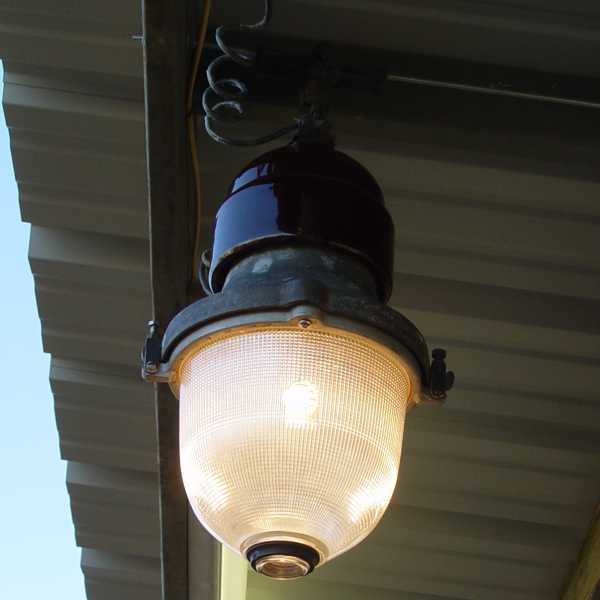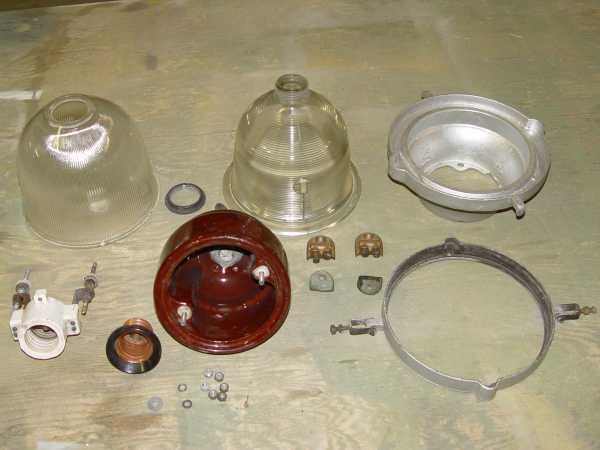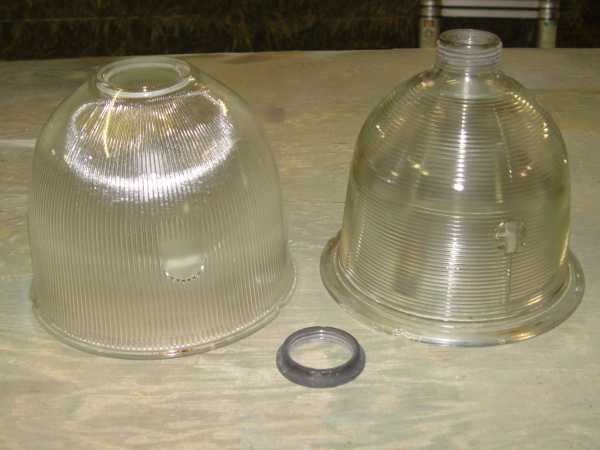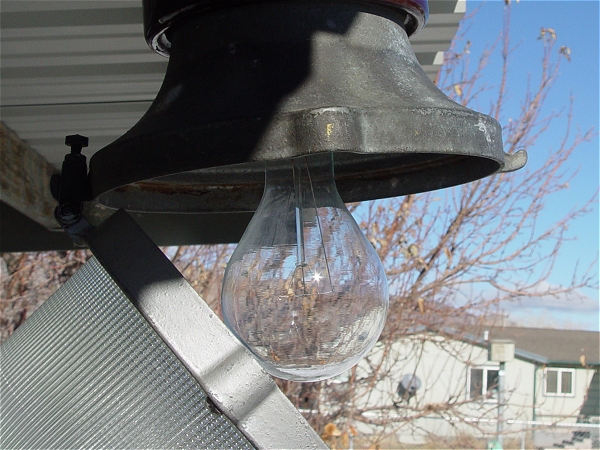|
This is a somewhat unusual street light that I acquired made by Holophane. Holophane was a large maker of glass refractors since before the turn of the century and their refractors were used by other manufacturers, principally by GE, but Holophane also manufactured complete luminaires. Their porcelain bodied luminaires were not very common.
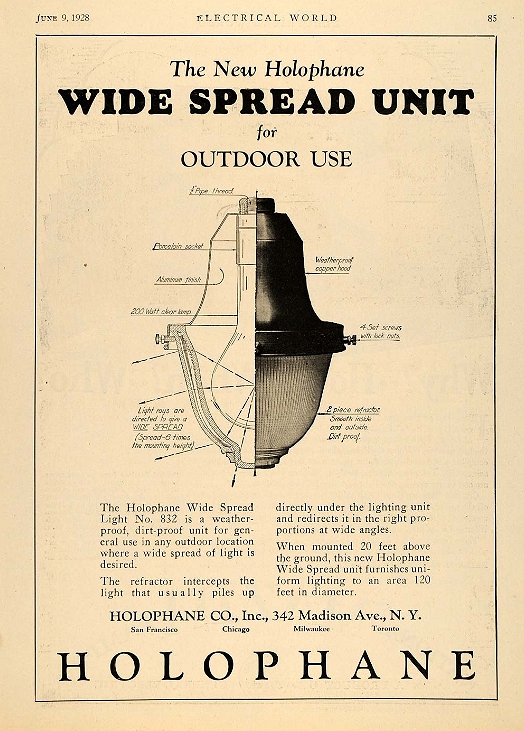
Since the light is unusual, I am posting full size images on this information page. I am also posting some patent information regarding this unique two piece refractor. This is a high voltage series street light. I does not have the typical film cutout disc but instead it has a film cutout socket insert. It uses a two-piece Holophane prismatic refractor system where one refractor fits inside the other. The outer refractor has vertical "corrugations" and the inner refractor has horizontal corrugations. Together the two refractors diffuse the light very evenly and reduce glare. Furthermore, the positioning of the lamp inside the refractor will change the angle of the lamp's maximum light distribution. The lamp socket rides on two threaded conductors that extend down from the supply conductor lugs. The socket can be adjusted up or down inside the lamp by rotating these threaded conductors. The reflector appears to be cast iron. Here are photos of the lamp disassembled. Top row: Outer refractor, refractor nut, inner refractor, reflector.
Closeup of refractors. Note the smooth "sighting marks" on the sides.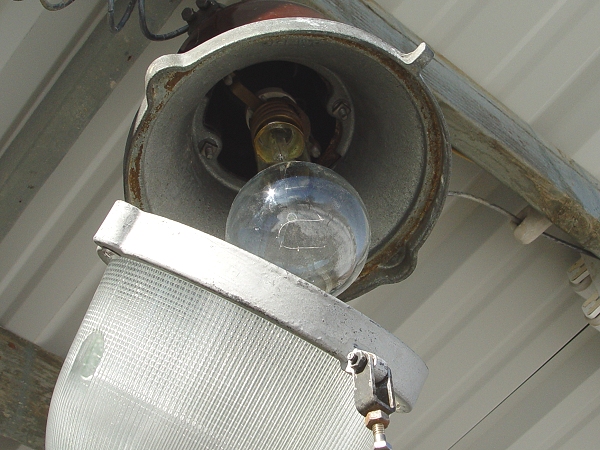
The latching hook on the left is taller, used as a hinge. The latching |
|
The Evolution of the Two-piece Prismatic Refractor System |
| The two-piece refractor system was designed by Otis Mygatt in 1915. As with many designs produced or acquired by Holophane, the basic principles of Mygatt's design are still applied today. While some variations of his system have been added such as altering the density and pattern of the corrugations to project more light toward the street and less toward near side houses for pole mounted lamps, street and ornamental lights using this system can still be purchased today. Holophane offers one with a polished aluminum body and a clear dome to protect the prismatic lens for around $2400.00. Click here for details. |

|
Drawing of Otis Mygatt's Two-Piece Refractor.
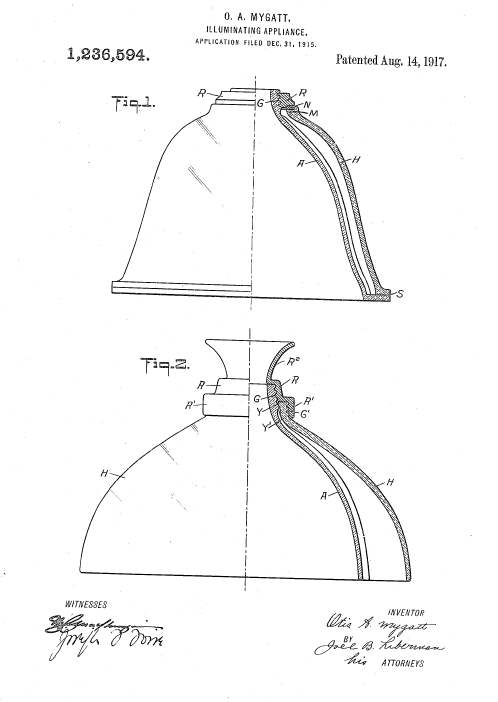
You can view a copy of entire patent 1,236,594 and the claims described in a new window by clicking here.
Holophane was extremely meticulous about obtaining optimum and predictable illumination from its equipment. As lamp bulb designs evolved, the patterns of light given by these lamps changed. Furthermore, one angle of maximum projected illumination may be desirable in one instance while a broader or narrower angle might be more desirable in another location. In 1930 Thomas Rolph patented an improvement on Mygatt's design by including sighting marks, or smooth areas on the refractor with calibrated marks by which the lamp could be accurately adjusted. By making a luminaire body where the socket could adjust up and down, an electrician could adjust the luminaire so that the lamp bulb was optimally positioned to give off the most desired illumination pattern with the least glare.
Drawing of Thomas Rolph's Sighting Mark.
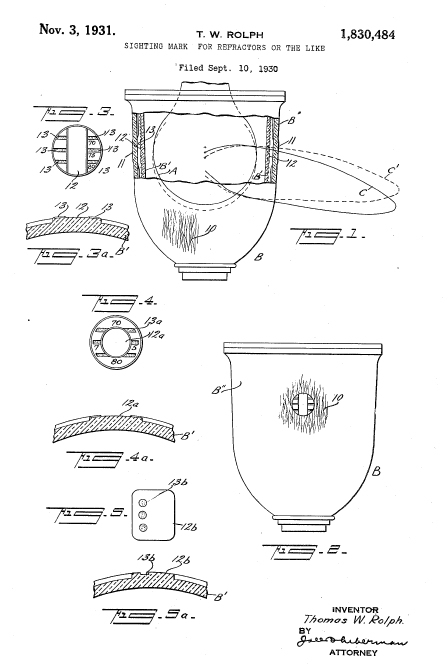
You can view a copy of entire patent 1,830,484 and the claims described in a new window by clicking here.
The luminaire now used for area lighting around the ranch.
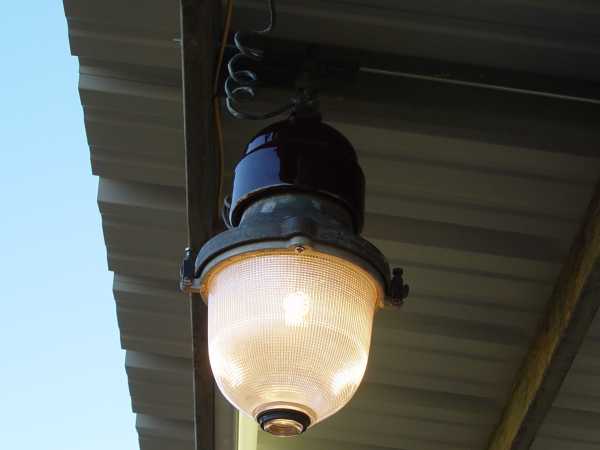
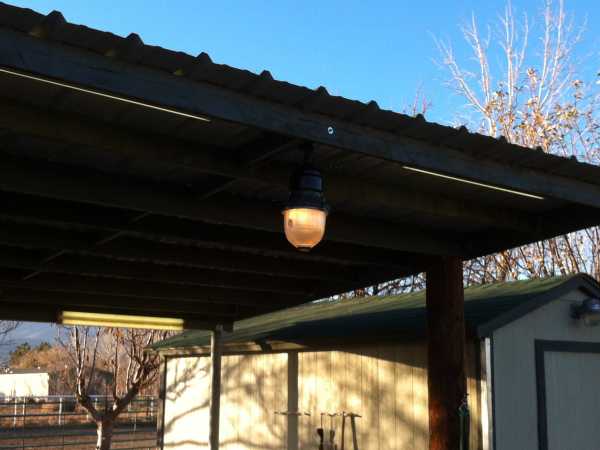
Most lamps for series lighting circuits use Jones type sockets that plug into a receptacle in the luminaire body. The bayonet blades of the socket hold a film cutout that is replaced when the fixture is relamped. When the socket is removed, the contacts in the receptacle close so that the series circuit stays alive.
So how could a screw-in socket insert work? If the lineman removed the insert the circuit would go dead.
Here's the answer. Many very early arc and incandescent street lights were supplied from the series circuit by isolation autotransformers. When a lamp failed, current would still pass through the primary transformer winding and keep the circuit alive. The problem arose with the advent of radio. When lamps burned out, the transformers often generated radio interference. To address this problem, film cutouts were added, in this instance by means of a socket insert. When the lamp failed, the film cutout shunted the autotransformer's secondary winding and the interference was significantly reduced, except during that brief period when the relamping process took place.
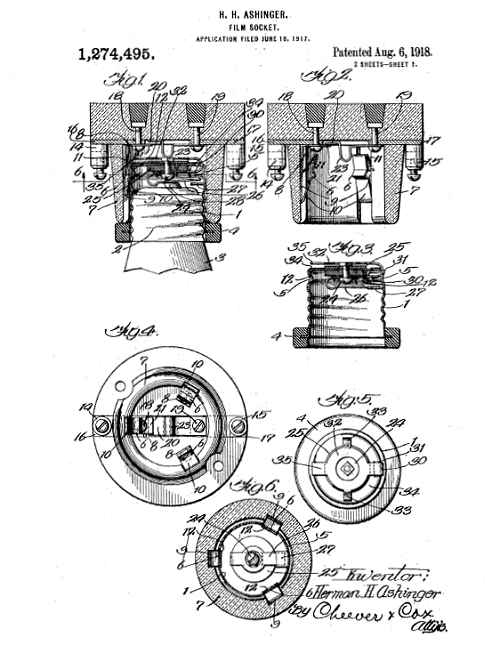
Holophane still produces a line of very elegant looking but efficient traditional style "teardrop" and "gumball" luminaires for historic district and "high class" applications. These luminaires can be viewed here.
For directions on how to properly adjust sockets using the Rolph Sighting Mark, please click Here.
Continue to
Holophane Double Prismatic "4-Way" Luminaire
